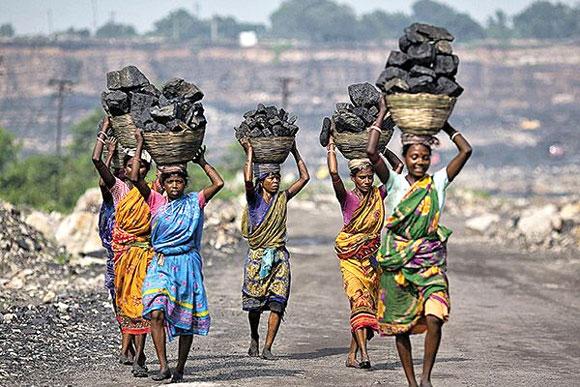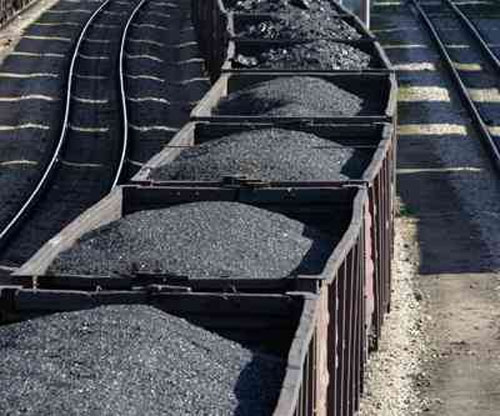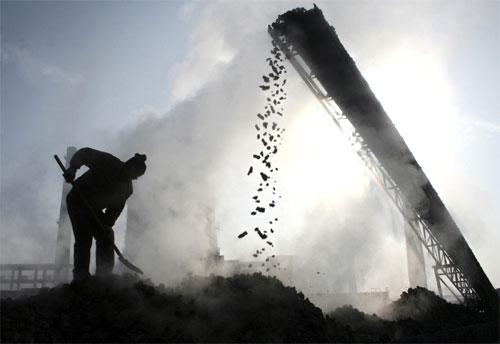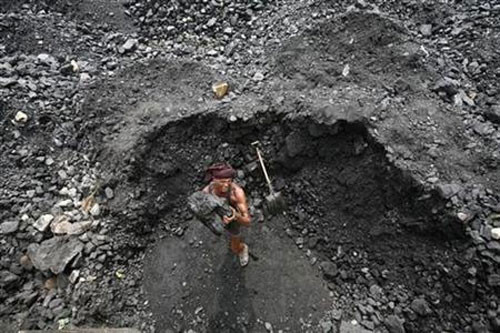 | « Back to article | Print this article |
India's coal import boom has limited beneficiaries
Indonesian coal making its way to India provides about a third less energy than supplies from South Africa or Australia.
India's record coal imports in the past fiscal year, and the virtual certainty they will rise again this year, look bullish for coal markets, but the likelihood is only a select few producers will benefit.
This is largely because of what types of coal India is buying and from whom they are purchasing, with the patterns of the past couple of years suggesting the boom in imports is narrowly focused on Indonesian miners of low-rank coal.
India's imports rose 29 percent to 135 million tonnes in the 2012/13 fiscal year from April to March, according to data from government sources.
Thermal coal imports for use in power plants jumped three-quarters to 97.23 million tonnes, while imports of coking coal, used in steel-making, rose a modest 1.2 percent to 32.2 million tonnes.
For the current 2013/14 year, traders are expecting another big jump in thermal coal imports to 115 million-120 million tonnes as India continues its programme of building coal-fired power stations.
While another 20 percent increase in coal imports should sound like music to the ears of coal miners battling lower prices amid a global oversupply, the key to India's market is in the breakdown of the figures.
Click on NEXT for more...
India's coal import boom has limited beneficiaries
In the 2012/13 year, India imported 77.5 million tonnes from Indonesia, a jump of 40 per cent on the prior year.
The second-biggest supplier was Australia at 26.8 million tonnes, up a tiny 2.8 percent, and South Africa was ranked third at 17.4 million tonnes, a jump of almost 43 percent from 2011/12.
However, it's worth noting that imports from South Africa have been jumping around, with 2010/11 arrivals being much the same as those in 2012/13.
Overall, looking at the past three years, it's clear that the bulk of the increase in India imports has been met by Indonesia.
The Southeast Asian nation is the world's largest exporter of thermal coal and it enjoys closer proximity to India than either Australia or South Africa.
But unlike its rivals, Indonesia's exports have been largely of low-rank coal, the bulk having a calorific value in the 3,600-4,200 gross-as-received (GAR) range.
This is well below the 5,500 net-as-received (NAR) calorific value that is more typical of Australian and South African coal, as 5,500 NAR equates to about 5,800 GAR.
Click on NEXT for more...
India's coal import boom has limited beneficiaries
What this means is that the Indonesian coal making its way to India provides about a third less energy than supplies from South Africa or Australia.
Of course, it also costs considerably less and can be blended with higher grade coal by power plants.
But the point is that this type of Indonesian coal has few buyers outside of India, and if Indian demand isn't forthcoming, then the low-rank coal will simply stay in the ground.
The low-rank coal is therefore not competing with higher-grade supplies, and producers of quality coal are unlikely to profit from rising Indian demand for thermal coal.
Click on NEXT for more...
India's coal import boom has limited beneficiaries
Low prices not helping
The only way producers in South Africa and Australia could realistically benefit from rising Indian demand is if the prices of their higher quality coal fell far enough to be competitive on an energy-adjusted basis with Indonesian low-rank coal.
That is unlikely as the current spot price of coal at Australia's Newcastle port is believed to be close to the marginal cost of production for many miners, meaning any further declines will most likely result in output being idled.
Newcastle coal was $87.78 a tonne in the week ended May 10, up from the $86.63 a tonne for the week to April 26, which was the lowest since November last year.
The current price is also 36 percent below the post-2008 global recession peak of $136.30 reached in January 2011, and the benchmark has been below $100 a tonne since May last year.
Does this mean that India is a lost cause for everybody other than Indonesian low-rank coal miners?
Not exactly, as the growing Indian power sector will need additional better quality coal for blending given the poor energy value of domestic supplies and Indonesian imports.
Click on NEXT for more...
India's coal import boom has limited beneficiaries
But growth in import volumes of high-rank coal is likely to be far slower than that for low-rank coal for the simple reason of cost and because many Indian generators run power plants optimised to run on poorer quality fuel.
A further caveat is that much of any potential increase in higher-rank coal from Australia is likely to be met by mines being developed by Indian companies.
Most prominent are two mega-projects in the Galilee Basin in Queensland state, by GVK Power & Infrastructure and by Adani Group.
Each aims to ship up to 60 million tonnes a year some 500 km (300 miles) from the Galilee Basin to a port at Abbot Point on the north Queensland coast.
However, both projects have yet to start construction and are unlikely to ship coal much before 2015, and that would be an ambitious timeline.
This means that existing producers may be able to meet some Indian demand for the next few years, but overall India's surging demand for imported coal is only bullish for a minority of miners supplying the Asian region.

© Copyright 2025 Reuters Limited. All rights reserved. Republication or redistribution of Reuters content, including by framing or similar means, is expressly prohibited without the prior written consent of Reuters. Reuters shall not be liable for any errors or delays in the content, or for any actions taken in reliance thereon.




